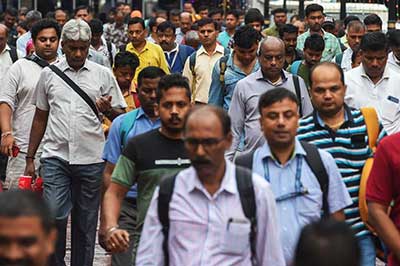Date: 10/10/2022
Relevance: GS-2: Issues Relating to the Development and Management of Social Sector/Services relating to Health, Education, and Human Resources.
Key Phrases: National Family Health Survey (NFHS), International Institute for Population Sciences (IIPS), crude birth rate, child mortality rate, Woman taking doctor’s assistance, female infanticide, maternal and child health.
Why in News?
- The south side story is definitely not a grim one but it may be a bit of a stretch to call it a shining success.
- To understand the divide between the southern States and the rest of India, a few health and social parameters are compared from the National Family Health Survey 2019-21.
National Family Health Survey (NFHS)
- The National Family Health Survey (NFHS) is a large-scale, multi-round survey providing information on fertility, infant and child mortality, the practice of family planning, maternal and child health, reproductive health, nutrition, anemia, and utilization and quality of health and family planning services in India.
- The First National Family Health Survey (NFHS-1) was conducted in 1992-93.
- The specific goals of the survey are to provide essential data on health and family welfare, as needed by the Ministry of Health and Family Welfare and other agencies, for policy and program purposes and to provide information on important emerging health and family welfare issues.
- International Institute for Population Sciences (IIPS) Mumbai is the nodal agency responsible for providing coordination and technical guidance for the survey. IIPS collaborated with several Field Organizations (FO) for survey implementation, and each FO was responsible for conducting survey activities in one or more states covered by the NFHS.
Falling birth rate:
- India’s crude birth rate (annual number of live births per 1,000 population) has been falling continuously.
- While the national average was 17.1 in 2019-21, it used to be 19 during 2015-16 and 23.1 during 2005-06, indicating a fall in the rise of population. The southern States are contributing a lot towards this.
- The birth rate was less than 15 in Kerala, Karnataka, Tamil Nadu, and Andhra Pradesh in NFHS 5.
- In Telangana, it was 15.3. On the other side, the birth rate in Bihar, Meghalaya, and Uttar Pradesh ranged between 20.5 and 25.9.
Falling child mortality:
- India has a child mortality rate (the probability of a child dying before reaching the age of five) of 41.9 percent according to the latest survey. However, the proportion is not uniform across States.
- For instance, in Uttar Pradesh, it is 59.8 percent, followed by Bihar (56.4 percent) and Chhattisgarh (50.4 percent).
- In Kerala, it is just 5.2 percent, the lowest in the country. It remains below 30 percent in Tamil Nadu, Telangana, and Karnataka. In Andhra Pradesh alone, it is 35.2 percent.
Woman taking doctor’s assistance:
- The proportion of women who received a doctor’s assistance while delivering a child was also high in the South at above 84 percent.
- It was 97.9 percent in Kerala, the highest in the country. However, it was less than 50 percent in Madhya Pradesh, Bihar, Chhattisgarh, Jharkhand, Uttar Pradesh, and Nagaland.
The other side:
- While the South shines in multiple aspects, there are places where the advancement is not that great.
- For instance, almost 50 percent of the women in Karnataka (the highest in the country) said they have experienced violence (physical, sexual or emotional).
- The proportion is as high as 42.9 percent in Tamil Nadu and 40.1 percent in Telangana. In Andhra Pradesh, it is 35.2 percent.
- Kerala, the exception here, had only 9.7 percent of the women who said they experienced violence.
- While the proportion is high in Bihar (42.5 percent) and Uttar Pradesh (37.3 percent), it is quite low in Himachal Pradesh (10.7 percent), Gujarat (14.3 percent), and Punjab (15.3 percent). The case is similar when it comes to spousal violence experienced by women, too.
Female infanticide:
- Though the proportion of female infanticide is quite low in the country, the survey shows that the practice still exists.
Blood relative marriage:
- According to NFHS 5, it has happened recently in 22 States. It adds that the proportion of women who marry a blood relative is the highest in Tamil Nadu, Karnataka, Andhra Pradesh, and Telangana, in that order.
- One of the positive things about marrying a blood relative is that if she knows the family, her agency is actually greater.
Conclusion:
- The lessons for the northern states to learn from the southern states, are to improve their investment in human capital —both health and schooling, more importantly, to monitor all developmental outcomes with better governance and efficiency.
- Northern and southern states should learn and adopt some of the best practices in the social and health sectors from each other to improve the overall performance of the nation.
Source: The Hindu BL
Mains Question:
Q. The performance of India depends on the performance of its constituent states, so there is room for a north-south divide among the states. Discuss in the context of the National Family Health Survey 2019–21 health and social parameters.






















